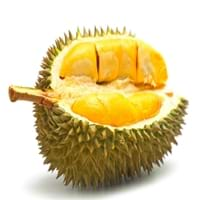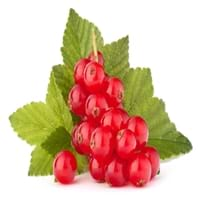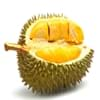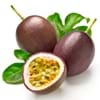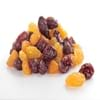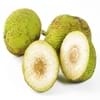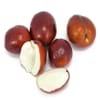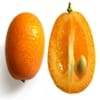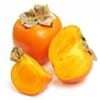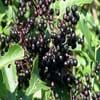Health Benefits
Anti depressant, Boosts immune system, Cancer prevention, Heart care, Reduces stress
Cancer prevention, Gout treatment, Heart care, Regulation of heart rate, Treatment of rheumatism
General Benefits
Anti oxidant properties, Anti-inflammatory properties, Boosts immune system, Controls blood pressure, Controls blood sugar levels, Digestive aid, Flu treatment, Strengthens bones
Anti oxidant properties, Controls blood pressure, Cures fever, Digestive aid, Healing of wounds, Helps in weight loss, Strengthens bones
Skin Benefits
Anti-aging benefits, Brightens and lightens complexion
Brightens and lightens complexion, Reduces wrinkles, Treatment of acne
Hair Benefits
Promotes longer and healthier hair, Protects hair
Protects hair
Allergy Symptoms
Diarrhea, Headaches, Hives, Nasal congestion, Red rash, Runny nose, Vomiting
Abnormally rapid heart rate, Anaphylaxis, Breathing difficulty, Hives, Itching, Swallowing difficulties
Side Effects
Affects blood glucose levels, Nausea, Stomach pain
Possibly unsafe during pregnancy
Best Time to Eat
Along with meal, As a snack in the late afternoon, Don't consume at night and before bed, Morning time (before lunch)
Best if taken as a breakfast (or empty stomach), As a snack in the late afternoon, Don't eat after meal, Morning time (before lunch)
Vitamin B5 (Pantothenic Acid)
Vitamin C (Ascorbic Acid)
Vitamin E (Tocopherole)
Not Available
Vitamin K (Phyllochinone)
Not Available
Lutein+Zeaxanthin
Not Available
Calories in Fresh Fruit with Peel
Not Available
Calories in Fresh Fruit without Peel
Not Available
Calories in Frozen Form
Not Available
Calories in Canned Form
Not Available
Not Available
Calories in Pie
Not Available
Type
Tree fruit, Tropical
Berry
Varieties
D24, D99 (Gob kecil), D123 (Chanee), D145 (Beserah), D158 (Gan Yau), D159 (Monthong), D169 (Tok Litok), D188, D189, D190, D163 (Hor Lor) and D164 (Ang Bak)
Rovada, Stanza, Red Lake, Junifer and Jonkheer van Tets
Taste
Creamy, Sweet
Sour, Tart
Origin
South-Eastern Asia
Europe
Grows on
Not Available
Trees
Soil Type
Clay
Moist, Well-drained
Climatic Conditions
Hot, Humid
Cold
Facts about
- 1 kg of durian contains 1350 calories which may cause weight gain.
- It may have a hyperthermic effect on the body, making you feel warmer.
- Study shows that durian has an ability to reduce infertility in men & women.
- The albino version of red currants known as white currants, are often sold as different fruit.
- Red currant tea is healthy substitute for coffee.
- There are more than 150 varieties of red currants.
Top Producer
Thailand
Russia
Other Countries
Indonesia, Malaysia, Philippines
Belgium, France, Germany, Ireland, Italy, Netherlands, Poland, Portugal, Scotland, Spain, Sweden, United Kingdom
Top Importer
China
Germany
Top Exporter
Thailand
Russia
Botanical Name
Durio zibethinus
Ribes rubrum
Synonym
Lahia Hassk
Not Available
Subkingdom
Tracheobionta
Tracheobionta
Division
Magnoliophyta
Magnoliophyta
Class
Magnoliopsida
Magnoliopsida
Subclass
Dillenhidae
Rosidae
Order
Malvales
Saxifragales
Family
Malvaceae
Grossulariaceae
Species
D. zibethinus
R. rubrum
Generic Group
Not Available
Saxifrage
Difference Between Durian and Red Currant
We might think that Durian and Red Currant are similar with respect to nutritional value and health benefits. But the nutrient content of both fruits is different. Durian and Red Currant Facts such as their taste, shape, color, and size are also distinct. The difference between Durian and Red Currant is explained here.
The amount of calories in 100 gm of fresh Durian and Red Currant with peel is Not Available and 56.00 kcal and the amount of calories without peel is 147.00 kcal and Not Available respectively. Thus, Durian and Red Currant belong to High Calorie Fruits and Low Calorie Fruits category.These fruits might or might not differ with respect to their scientific classification. The order of Durian and Red Currant is Malvales and Saxifragales respectively. Durian belongs to Malvaceae family and Red Currant belongs to Grossulariaceae family. Durian belongs to Durio genus of D. zibethinus species and Red Currant belongs to Ribes genus of R. rubrum species. Beings plants, both fruits belong to Plantae Kingdom.
